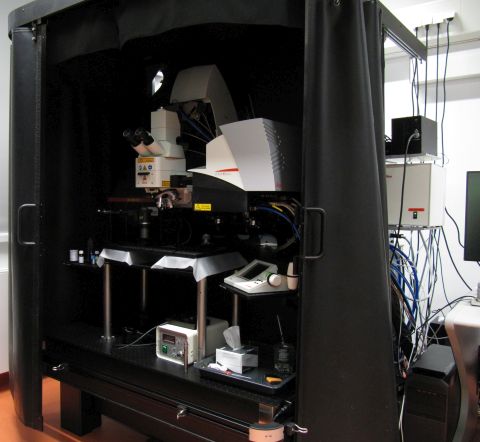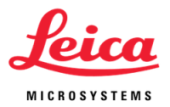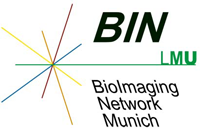Gaviola: Fluorescence lifetime imaging with one- and multi-photon excitation
Named after Enrique Gaviola (1900 – 1989), an Argentinian physicist who worked in Germany, USA and his home country. Considered to be the most eminent Argentinian scientist in the first half of the 20th century. He was the first to accurately measure fluorescent lifetimes. He did so during is PhD in Germany. (Wikipedia de|en|es).
Summary
A Leica SP8 Falcon (fast lifetime contrast) system with one and two-photon excitation (DIVE). The microscope stand is an upright DM8 with up to 0.5 m space below the objective, to accommodate also large sample geometries. Pulsed one-photon excitation with 405 nm and from 470 – 670 nm (white light laser). Pulsed two-photon excitation from 700 to 1300 nm. Descanned and non-descanned detection, both with spectral detection. Leica designation is SP8 WLL DIVE FALCON. With Scientifica MMBP stage.

Optics
- For one-photon excitation an objective turret holds the following standard lenses:
- HC PL FLUOTAR 5x/0.15, working distance (WD) 12.0 mm. Usable with and without coverslip, no immersion.
- HCPL FLUOTAR 10x/0.30, working distance (WD) 11.0 mm. Usable with and without coverslip.
- HC PL APO 20x/0.75 IMM CORR CS2. Usable with and without coverslip, with water, glycerol or oil. WD depends on immersion, e.g. 0.67 mm for water with coverslip.
- HC PL APO 40x/1.30 Oil CS2. WD 0.24 mm.
- HC PL APO 63x/1.40 OIL CS2. WD 0.14 mm.
- HC PL APO 63x/1.30 GLYC CORR CS2. For glycerol immersion (ne=1.451 @ 21°C). WD 0.3 mm. Color corrected for 21°-37°C. Correction collar for temperature, coverslip thickness or refractive index (80% glycerol/ 20% water).
- For two-photon excitation, the standard objective is a HC IRAPO L 25x/1.00 W motCORR (WD 2.6 mm). This has a wider diameter (32 mm) than the usual objective and is therefore mounted on a slider which is exchanged against the objective turret.
- Also available: HC FLUOTAR L 16x/0.6 IMM CORR VISIR, WD 2.5 mm. Usable with and without coverslip, for immersion media from ne=1.33 – 1.52. Suitable for BABB (Benzyl Alcohol, Benzyl Benzoate). Color corrected up to 1300 nm.
- Other objectives may be borrowed from other systems upon request.
Confocal Light Path
Excitation Lasers
Two lasers are available. The 405 nm laser is usually used for Dapi or related dyes. It also can be used for CFP excitation. This Diode Laser LDH-P-C-405B is pulsed (at 40, 20, 10, or 5 MHz) and therefore can be used with FLIM. But it is much weaker than the usual (continous wave) 405 nm laser.
The pulsed WLL E "white light laser" emits all wavelengths between 470 and 670 nm. Of those, up to 8 can be selected simultaneously. Each selected wavelength has about 1 mW power which can be attenuated with the AOTF. The pulse picker allows frequencies of 80 MHz or less. See White Light Laser - The Ultimate Source for Confocal Microscopy at the Leica Science Lab for more information.
Beam Splitter
Instead of dichroic filters, an optical crystal is used as beam splitter, the acousto-optical beam splitter (AOBS). You don't need to know how it works, but if you want to, there is an article on the Leica Science Lab. Depending on the selected excitation wavelengths, the fluorescence settings for this filters are made automatically.
Detectors
The detectors for the confocal images are all in the spectral scan head which allows continous detection between 400 and 800 nm. We have 2 Photomultiplier Tubes (PMTs; Hamamatsu) and 3 hybrid photo detectors (HyDs). Two of them are so-called SMD-HyDs, which are particularly suitable for FLIM recordings. Caution: The HyDs are more sensitve (45% QE at 530 nm) but also more easily damaged! As explained during hands-on training, if you have an untested sample we highly recommend to start with the PMTs to get an impression of signal intensity. See "Sensors for True Confocal Scanning" (Leica Science Lab) for more infos on HyDs.
Multi-photon light path
Multi-photon excitation laser
Insight X3 DUAL, 1045, from Spectra Physics (product website). Emission tunable from 680 - 1300nm. Automatic dispersion precompensation. Output >2 W @900 nm, >1W @700 and @1300 nm. Pulse width <120 fs. Second laser line fixed at 1045 nm with average output >3.5 W, pulse width <200 fs.
Detectors
Four backward, "external" detectors for multi-photon microscopy are available in the 4 channel DIVE/4Tune configuration. These non-descanned detectors range from 380 to 800 nm. Spectral detection can be set as needed with a minimal width of 10 nm and a step size of 1 nm. The first (blue) detector is a PMT, the other three are SMD-HyDs suitable for FLIM.
In addition to those dedicated multi-photon detectors, the internal detectors (see above) could be used with opened pinhole.
Caution: The HyDs are very sensitive (45% QE at 530 nm) but also easily damaged! As explained during hands-on training, if you have an untested sample we highly recommend to start low excitation powers to get an impression of signal intensity. See "Sensors for True Confocal Scanning" (Leica Science Lab) for more infos on HyDs. If signals should be too bright, you also can use the internal PMTs in the spectral detector. If so, remember to open the pinhole to maximum.
Scanners
Two different scan modes are available. The "normal" scanner (field of view, FOV scanner) has a very large maximal field of view with up to 8192x8192 pixels (64 Mpx) and speeds between 1-1800 lines per second (Hz). With 512x512 pixels it can record up to 7 frames per second. Zoom factor can be 0.75 - 48x. As opposed to earlier incarnations of the FOV scanner, this version has a linear scan mode and a duty cycle of 65% (unidirectional scan mode).
The 8 kHz resonant scanner does a fixed number of 8000 lines per second, or 16000 in bidirectional mode. It records up to 28 frames at 512x512 pixels. Maximal image size is 2496 x 2496 pixels, zoom factor 1,25x - 48x.
Stage
The Scientifica MMBP stage of the microscope is fixed, meaning it cannot be automatically moved up and down. (The objective is moved up and down to make z-stacks.) Its advantage is that it can carry heavy loads, according to the spec sheet up to 30 kg. MMBP stands for Motorised Moveable Base Plate. It can be moved in x,y with a step size of 0.1 µm over 50 mm via the software or via external control.
The special design of this setup allows to remove the stage or to fix it at a different height.
Screw drivers are required for this, please ask facility staff for assistance.
Conventional fluorescence
Meant for visual inspection only, not for documentation. Excitation with Lumencor SOLA-SMII white light LED. With DAPI/FITC/TX Triple Bandpass (Ex: BP 403/18, BP 492/18, BP 575/25. Em: BP 456/30, BP 530/35, BP 630/60).







